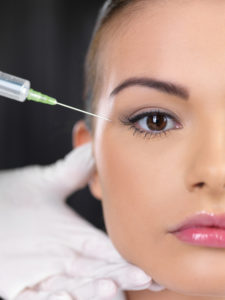 Everyone knows Botox. It is one of the most famous brand names in the world, rating right up there with Coca-Cola and Xerox. This neuromodulator is the world’s most popular cosmetic procedure, surgical or non-surgical, every year. But Dr. Lavey also offers Xeomin as an alternative for his patients.
Everyone knows Botox. It is one of the most famous brand names in the world, rating right up there with Coca-Cola and Xerox. This neuromodulator is the world’s most popular cosmetic procedure, surgical or non-surgical, every year. But Dr. Lavey also offers Xeomin as an alternative for his patients.
Like Botox, Xeomin is made from the botulinum toxin type A. But Xeomin consists of nothing but the toxin; it has no additives. This can be beneficial for patients who have had a reaction to Botox.
What is Xeomin?
Xeomin is a neuromodulator, meaning it stops muscles from contracting. In the same way that Botox was originally approved for other uses such as stopping involuntary eyelid spasms, Xeomin originally gained FDA approval for the treatment of two conditions — cervical dystonia (a painful condition where the neck muscles contract involuntarily causing the head to twist to one side) and blepharospasm (involuntary tight closure of the eyelids).
More recently, Xeomin was approved for cosmetic use for moderate to severe frown lines, lines between the eyebrows (the 11s), and other forehead lines. It is also effective on crow’s feet. Generally, all neuromodulators are effective on the top third of the face.
It’s all about the botulinum toxin
Like Botox, Xeomin is made from the botulinum toxin type A, the same bacteria that cause botulism. A few decades back, doctors discovered that when delivered in very small amounts this toxin could temporarily paralyze a muscle. It does this by blocking the signals from the muscle’s nerves to the brain. Because the brain does not receive the message, it doesn’t contract the muscle. This can be very valuable in cases of involuntary muscle spasms such as those described above. The botulinum toxin type A has even proven effective at treating migraine headaches and excessive underarm sweating.
But it was when it was tried on facial wrinkles that the toxin became famous. When we perform common behaviors such as frowning or squinting, certain muscles contract and form wrinkles on the surface above. Over time those wrinkles can become more permanent due to these repeated contractions. But Xeomin (and Botox and Dysport) stops the muscles from contracting, so the wrinkles on the surface don’t form or are far less apparent.
How is Xeomin different from Botox?
The difference between Xeomin and Botox is purity. Xeomin contains nothing but the botulinum toxin type A. Because of this some doctors have used the term “naked injectable” when talking about Xeomin. Botox has some added surface proteins in addition to the toxin. Some people can have a reaction to these proteins. In those people, Xeomin may not cause the same reaction.
What’s the difference between Xeomin and Dysport?
Like Botox, Dysport has some added proteins. But Dysport spreads a little more than Botox or Xeomin so it can be a better option in areas where several injections are needed because it can spread to cover a greater area.
How long does Xeomin take to start working?
Botox and Xeomin are nearly identical in how long they take to shut down the muscles. Both take from five to seven days to fully take effect.
How long does Xeomin last?
Xeomin does its wrinkle-eliminating magic for three to six months. Different people absorb the now-inactive Xeomin at different rates, explaining the spread in the length of effectiveness. Once the body absorbs Xeomin, the wrinkles will start to form again and it’s time for another session to maintain your results.
So, now you know about Xeomin. Dr. Lavey offers it, along with Botox and Dysport, because sometimes patients have reactions to the additional proteins that are built into those other two neuromodulators. Since Xeomin is pure botulinum toxin type A, those same patients may not have the same reaction to it.
Want to do something about those crow’s feet? Call Dr. Lavey at 925-820-3633 and ask about Xeomin.








No comments yet.